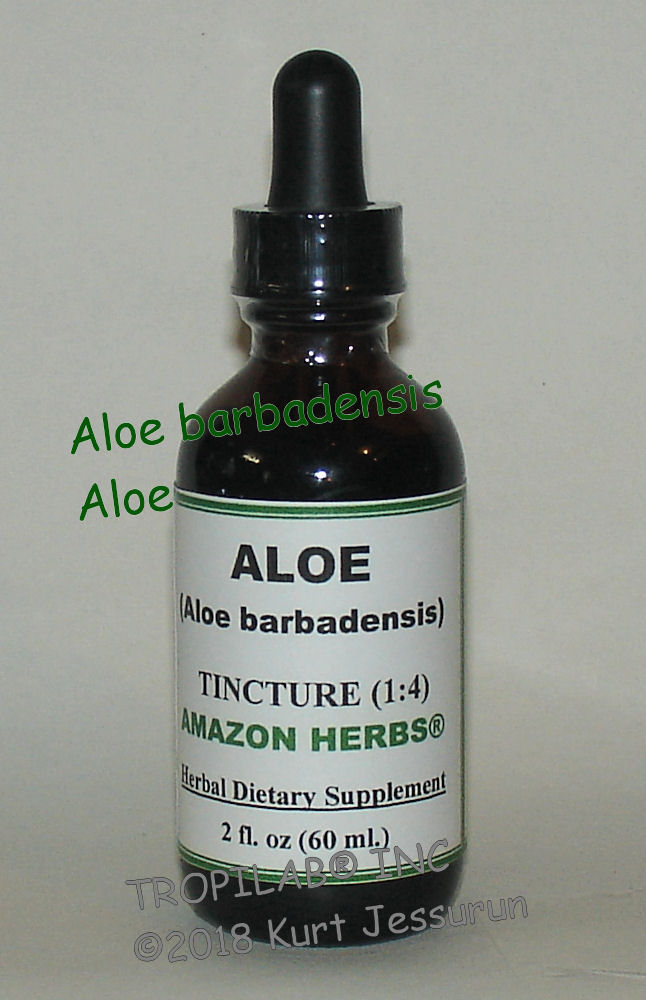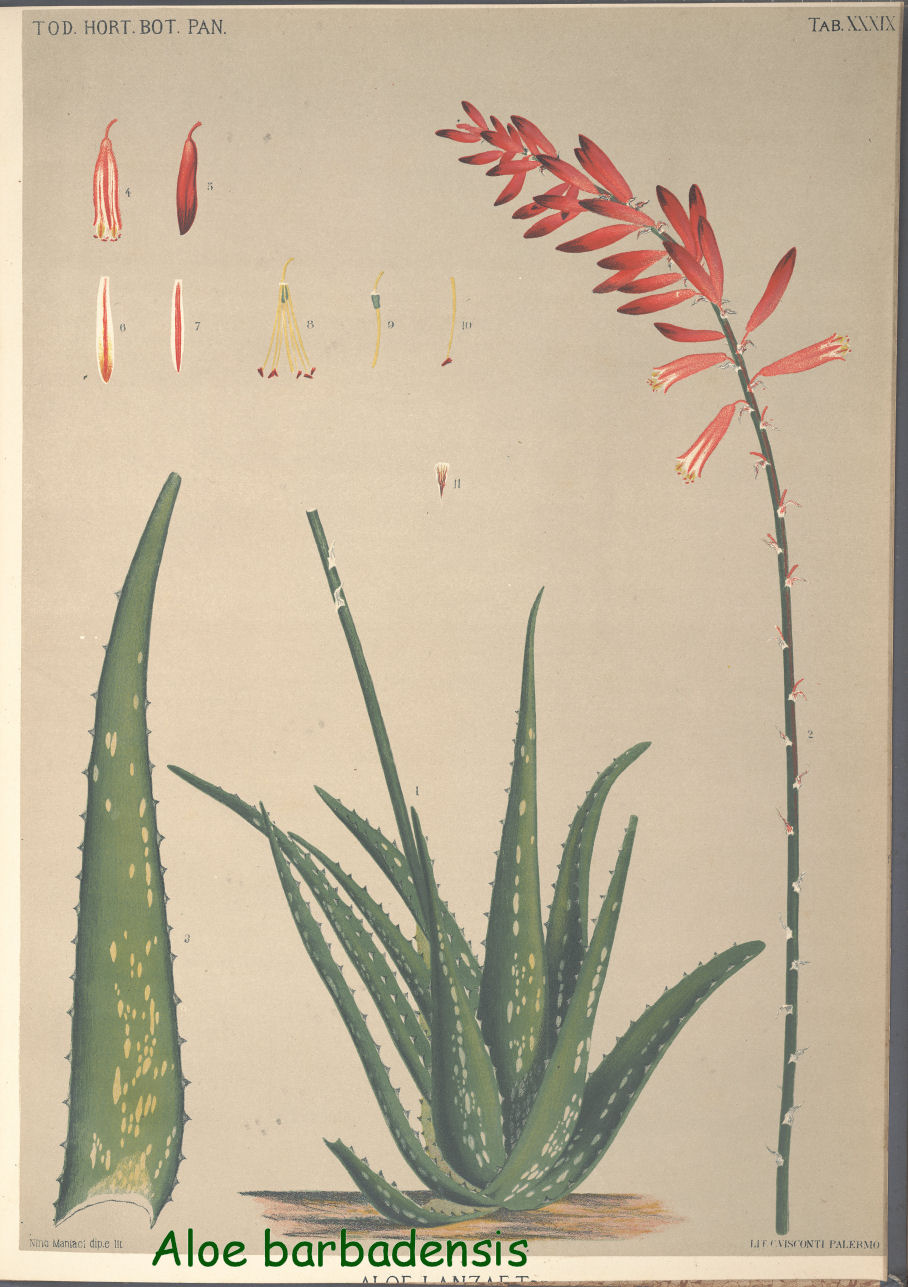Overview

Aloe has internal and external uses. We do not use the bitter yellow latex (from the bundle sheath cells) that is
used for purgative properties. Only the clear gel (98% water) and outer green peel (rind) is used.
Topical uses are for skin irritations (psoriasis), to halt irritation and against injury from radiation. Also for herpes,
wound remedy and periodontal use.
Internal uses are for diabetes & blood sugar control, mouth and stomach ulcers, cholesterol lowering, for immune system
support and inflammatory bowel disease (IBD). It manages ulcerative colitis and other digestive issues.
Aloe vera benefits; it has both antibacterial and antifungal properties.
Constituents
Gel polysaccharides and glycol-proteins; vitamins A (beta-carotene), B1, B2, B6, B12, C, E (alpha tocopherol),
folic acid and choline, minerals (calcium, chromium, copper, selenium, magnesium, manganese, potassium, sodium and zinc), enzymes
(amylase, bradykinase, carboxypeptidase, catalase, cellulase, lipase and peroxidase), amino acids, salicylic acid, lignin
and saponins. Fatty acids (campesterol, beta-sitosterol and lupeol).
Pharmacology
 Pharmacological attributes of Aloe vera have been revalidated which proves that it has enormous
potential in pharmaco-therapeutics. More than 75 active ingredients from the gel and rind have been identified including
vitamins, minerals, enzymes, sugars, phenolic compounds, lignin, saponins, sterols, amino acids and salicylic acid.
Pharmacological attributes of Aloe vera have been revalidated which proves that it has enormous
potential in pharmaco-therapeutics. More than 75 active ingredients from the gel and rind have been identified including
vitamins, minerals, enzymes, sugars, phenolic compounds, lignin, saponins, sterols, amino acids and salicylic acid.
Aloe vera gel contains a glycoprotein with cell proliferating- promoting activity, while it is found that this gel improved
wound remedy by increasing blood supply, which increased oxygenation as a result. Topical application of the Aloe
vera derived allantoin gel stimulated fibroblast activity and collagen proliferation.
The wound remedy activity was compared with the standard drug Povidone Iodine ointment. Aloe Vera leaves pulp was
found to have better and faster wound remedy effect than this standard drug on excision wound models.
Anti-inflammatory effects; Aloe inhibits the cycloxigeanase pathway and reduces prostaglandin E2. The anti-inflammatory
compound called (C-glycosyl chromone) was isolated from gel extracts. The peptidase bradykinase, isolated from aloe showed
to break down the bradykinin, (inflammatory substance that induces pain).
Antibacterial, antifungal and antiviral; activity of the gel against both Gram-positive and Gram-negative
bacteria has been demonstrated. A processed gel preparation inhibited the growth of Candida albicans.
Antitumor effect; two fractions from aloe that are claimed to have anticancer effects include glycoproteins
(lectins) and polysaccharides. Studies indicated antitumor activity for the gel in terms of reduced tumor burden, tumor
shrinkage, tumor necrosis and prolonged survival rates.
Dosage
Tincture: 1 – 3 ml, daily.
Precaution
No significant side effects of aloe vera gel, without the latex part, have been noted;
do not take aloe by mouth if you are pregnant or breastfeeding.
Reference
Aloe vera plant: review with significant pharmacological activities.
Paoulomi Chatterjee, Bodhisattwa Chakraborty and Subhangkar Nandy.
Pharmacological attribute of Aloe vera: Revalidation through experimental and clinical studies.
Vinay K. Gupta and Seema Malhotra.
The above presentation is for informational and educational purposes only.
It is based on scientific studies (human, animal, or in vitro), clinical experience, or traditional usage.
For many of the conditions discussed, treatment with prescribed (RX) or over - the - counter medication (OTC) is also available.
Consult your doctor, practitioner, and/or pharmacist for any health problem and before using dietary
supplements or before making any changes in prescribed medications.
|

